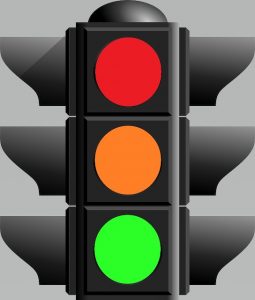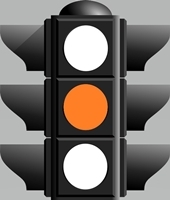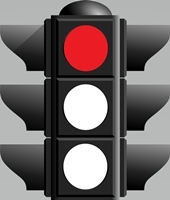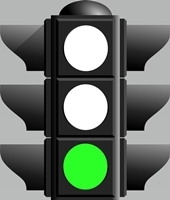
07 Nov 2017 Manage Emotions better by using the Traffic Lights Imagery
Does this sound familiar? You’re having a conversation with someone, or perhaps you are in a meeting, and someone says something that really gets under your skin. Before you realise it, you respond: maybe a little angrily or perhaps you say something that you later regret. When you reflect on it afterwards (and usually after you’ve calmed down), you realise that you let your emotions dictate your response rather than manage your emotions a little better.
Unfortunately, once words are spoken they can’t be taken back. The damage has been done and now you face the challenge of repairing broken or bruised relationships.
If this is a common occurrence in your professional or personal life, you may find the following strategy can help improve your emotional intelligence and allow you to respond in a more measured way to the situations or personalities that you find challenging.
It’s based on an idea that is sometimes used in child psychology to help children regulate their emotions. In this case though, we’re adapting this simple strategy to help adults respond in a more emotionally intelligent way to overwhelming or stressful situations.
Traffic Light Signal Strategy
In moments that we find particularly difficult, it is sometimes useful to think of a metaphor or an image that will act as a trigger to stop us from responding inappropriately. I suggest that the everyday Traffic Light Signal should be that image.
You may consider this as a useful tool to remind yourself not to respond with your first thought or let your emotions dictate what you say when someone presses your buttons.
The Red-Orange-Green imagery is useful in reminding you to slow down, stop and then go again when you feel just a little calmer and hopefully more in control so you can manage emotions better. Over time, this strategy can help you improve your emotional intelligence.
So, let’s replay the scenario I outlined above.
You’re having a conversation with someone or you are in a meeting and someone says something that really gets under your skin.
Now, before you respond, imagine a set of traffic lights turning orange. What do you do when you come to an orange light? As you would when driving a car, tell yourself to slow down. Don’t respond before you’ve given yourself some time to consider your response.
You don’t want to run a red light… far too costly! Orange is the key signal. Slowing down right there and then is the key message you need to send yourself! Don’t respond before you’ve given yourself some time to consider your response.
Now the lights have turned Red. You have come to a stop.
I suggest you take a deep breath at this point. Fill your lungs with air and exhale slowly. As you exhale, feel the tension, the anger or frustration leaving you. Once you’ve taken your deep breath, try counting slowly to 5…. Don’t rush. Don’t hit the accelerator yet, the lights are still red.
Give yourself time to think of your response. Maybe now you are thinking a little more rationally and can respond more calmly.
Still hot under the collar? Buy more time by asking a question
Perhaps you’ve taken a moment to pause and gather your thoughts, but are still too emotional to respond. If this is the case, buy more time by responding with a question. Typically it would be a question to help you understand or clarify what you just heard someone say.
Something like I’m sorry, I’m not sure I quite understand your point, or, can you please repeat that for me? These small tactics prompt the other person to talk while you get your emotions back under control. The person may even modify their response to be a little less edgy or less aggressive. They may even help you by clarifying something they said that now doesn’t seem quite so inflammatory.
Another strategy to use at this point is to respond with a question rather than giving your opinion. A question to perhaps help you understand or clarify what you just heard someone say.
By now the lights are turning green and you’re ready to respond. By using the simple Traffic Light Signal strategy, you can effectively manage your emotions better and respond to potentially challenging situations in a much calmer and articulate way.
Next time you are in that meeting and someone says something that really irks you, try to remember the Traffic Light Signal imagery before you respond. It may not be this simple in every situation, but for the most part it can be a helpful tool to manage your emotions better in difficult situations which can further improve your emotional intelligence.
Geoff Prior – Lingford Consulting, October 2017
Workload & Email Management Training/Coaching. MBTI Consultant
Looking to improve your Emotional Intelligence? Check out our EQi2.0 EI Assessment options






No Comments